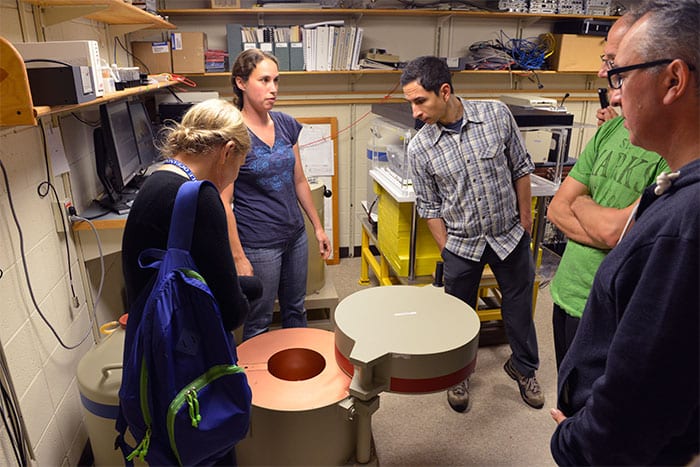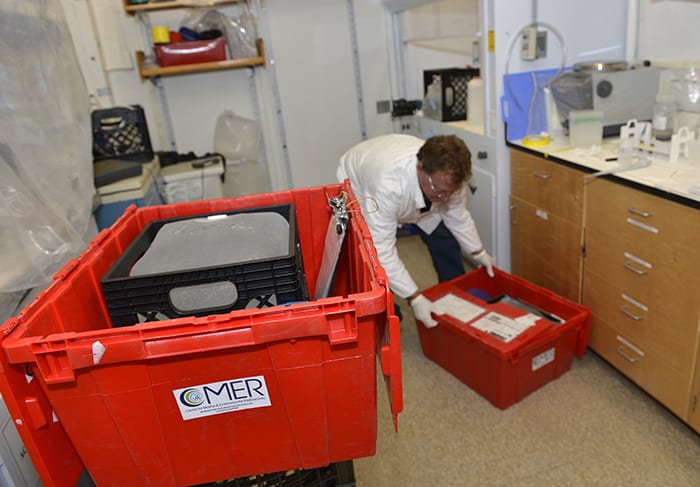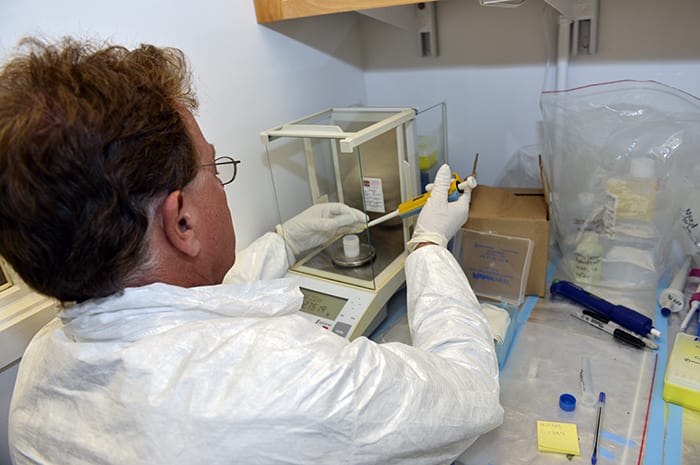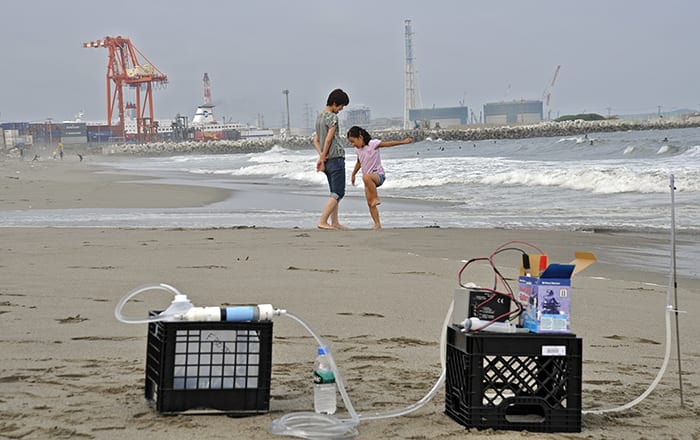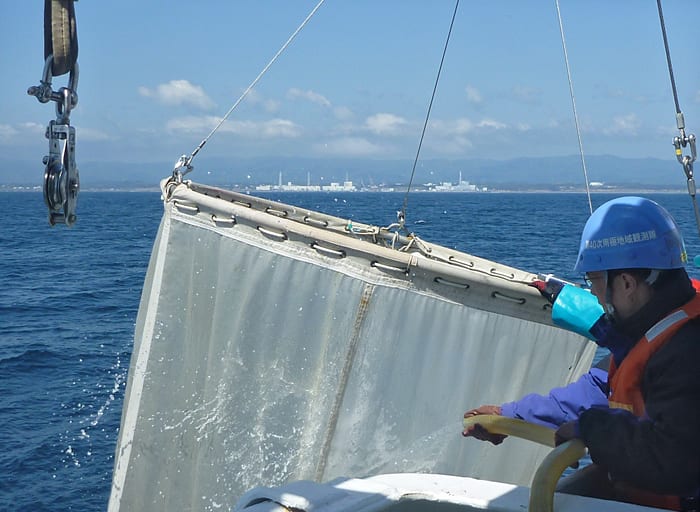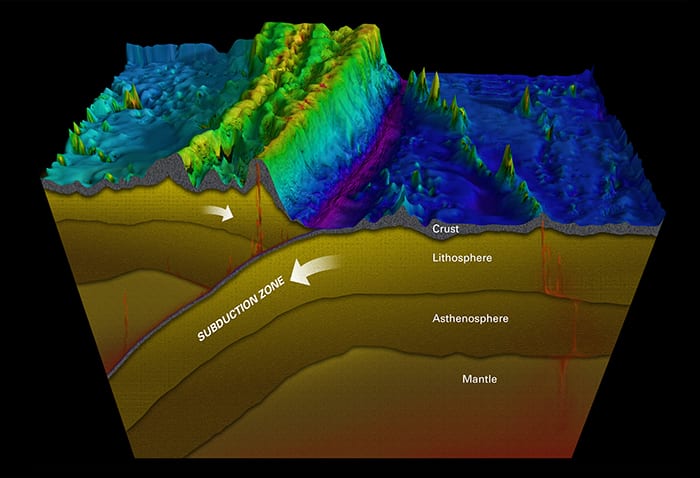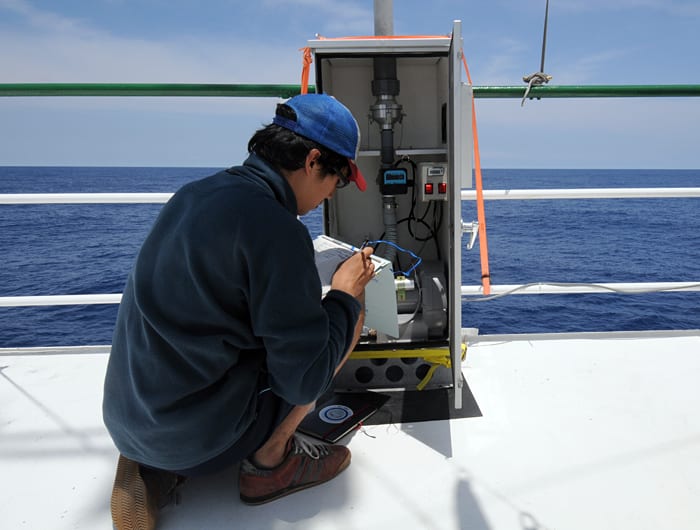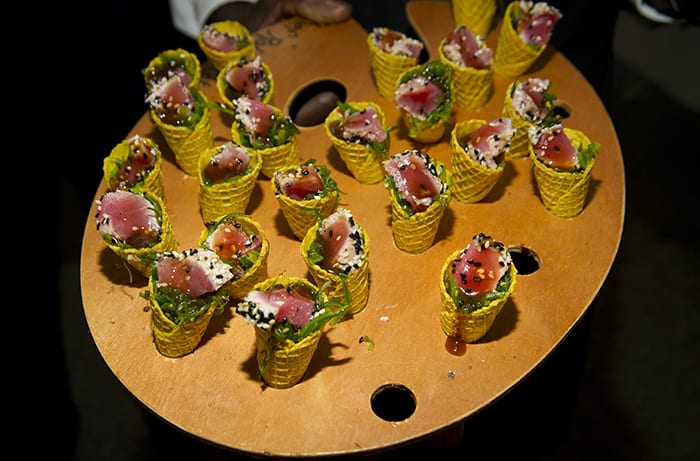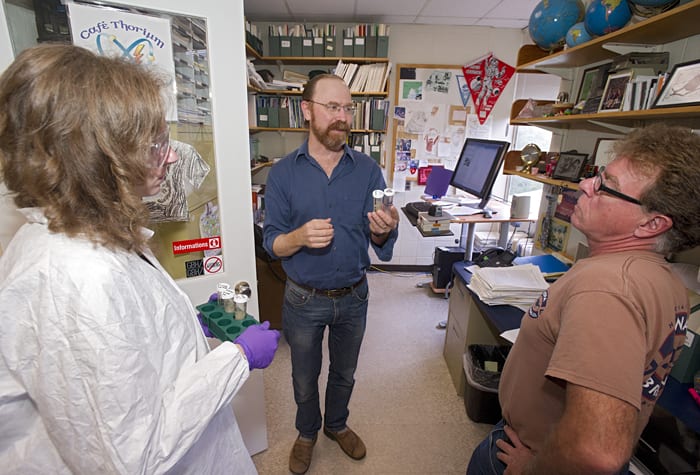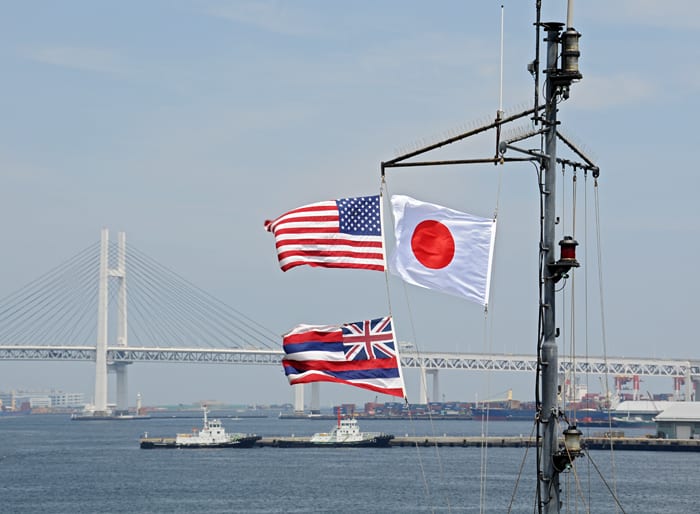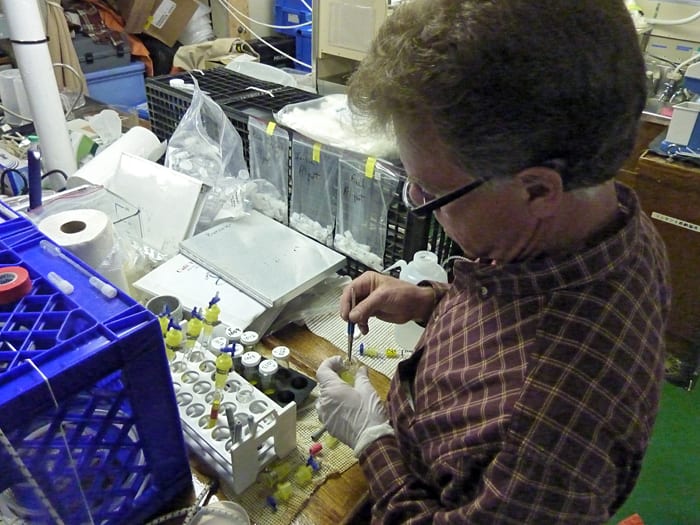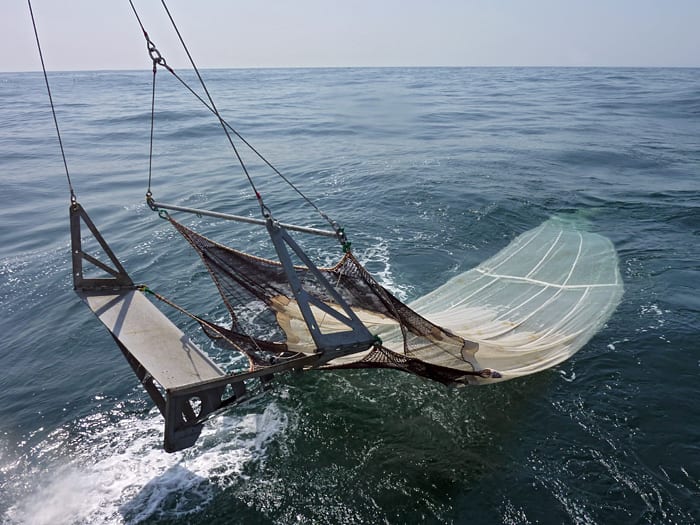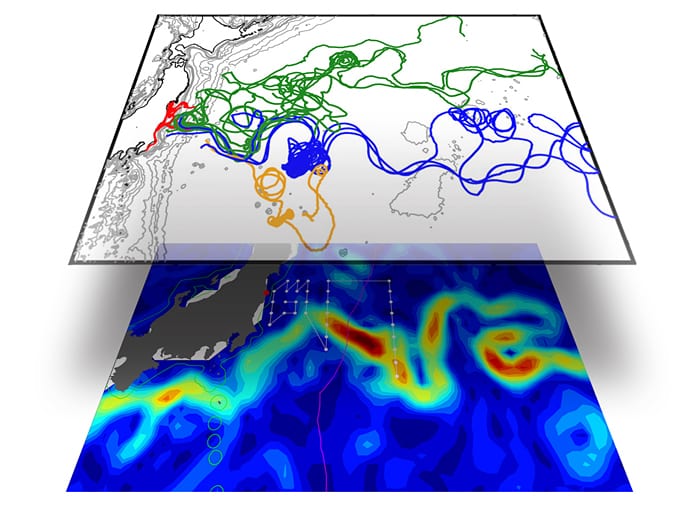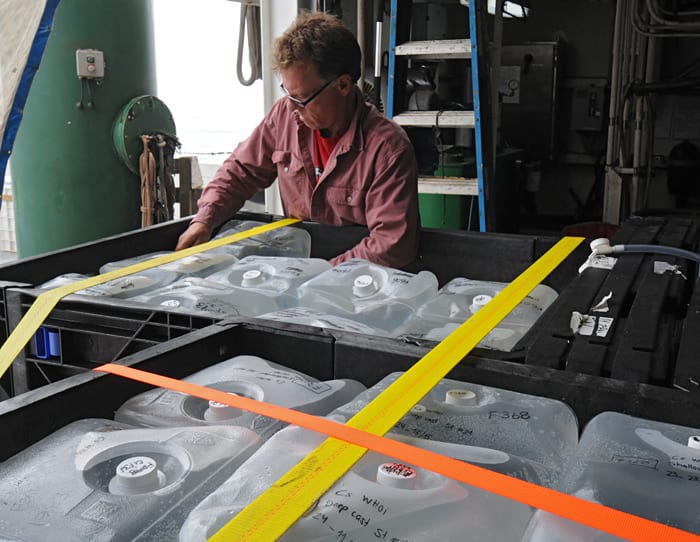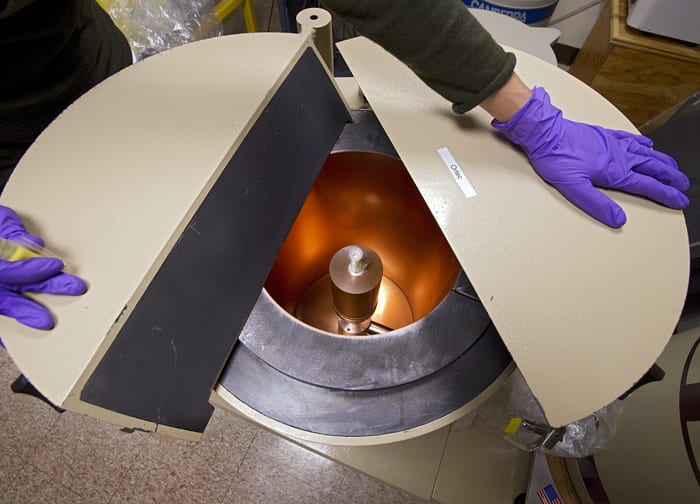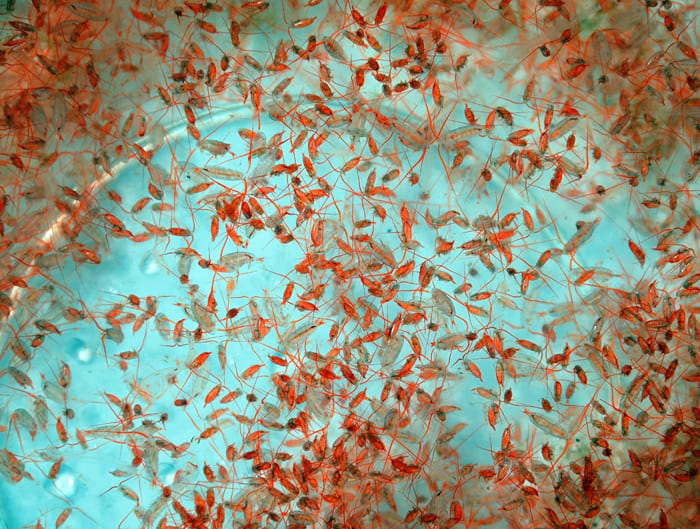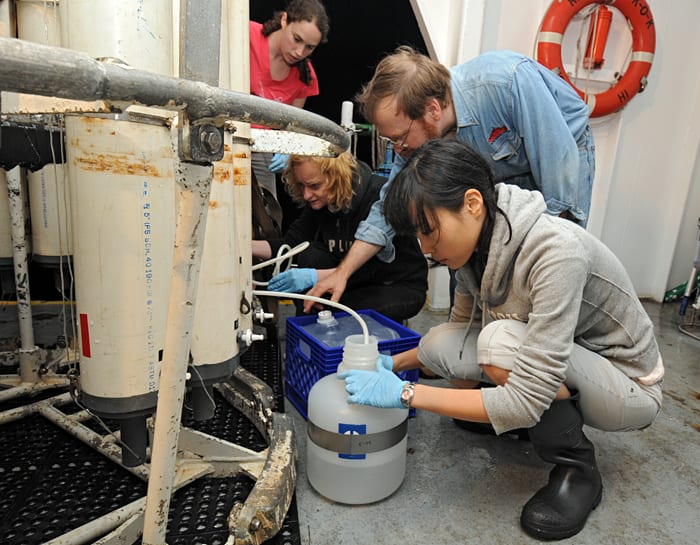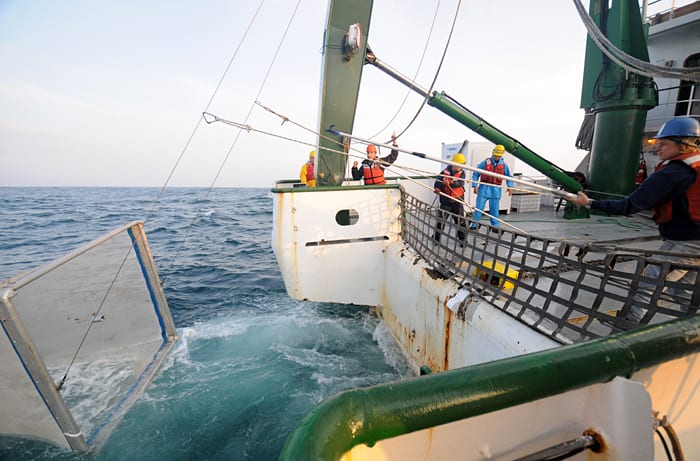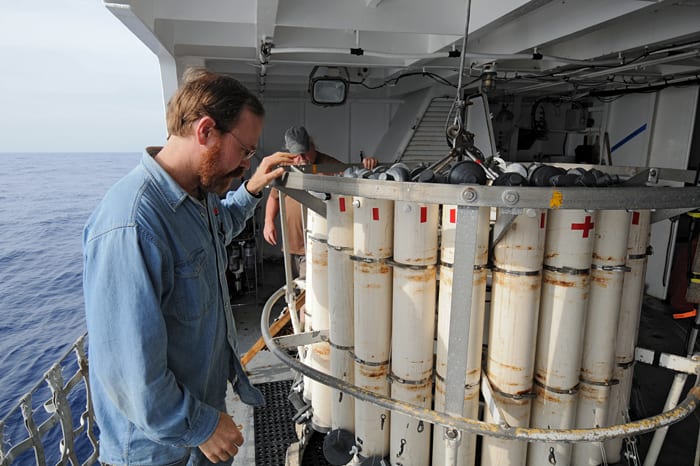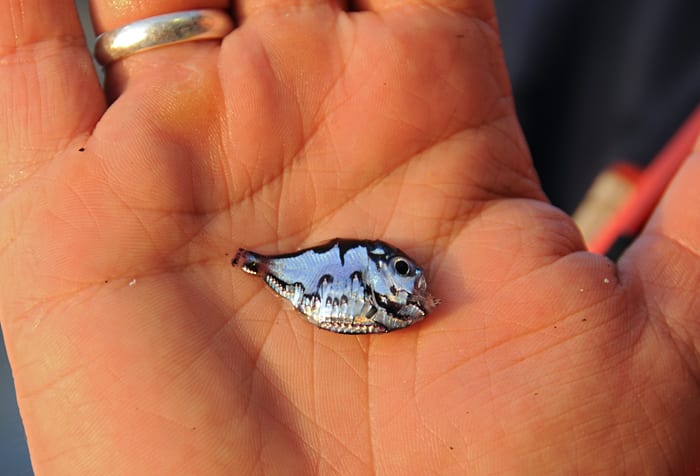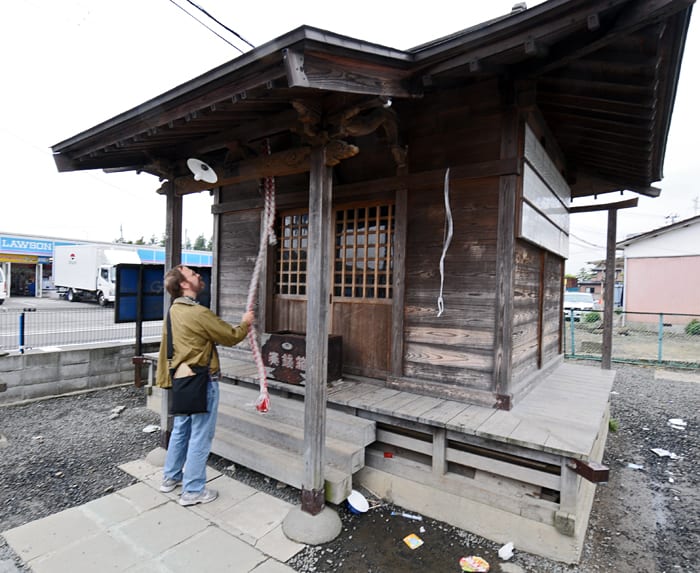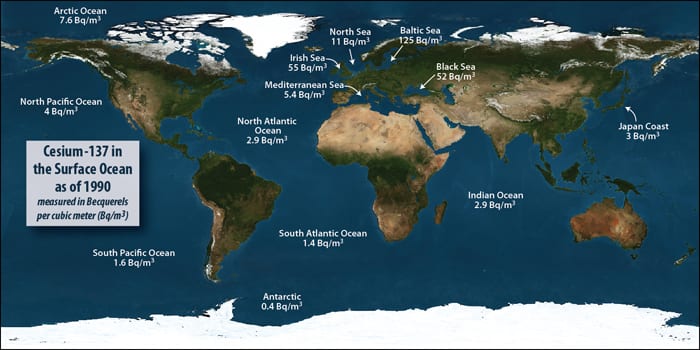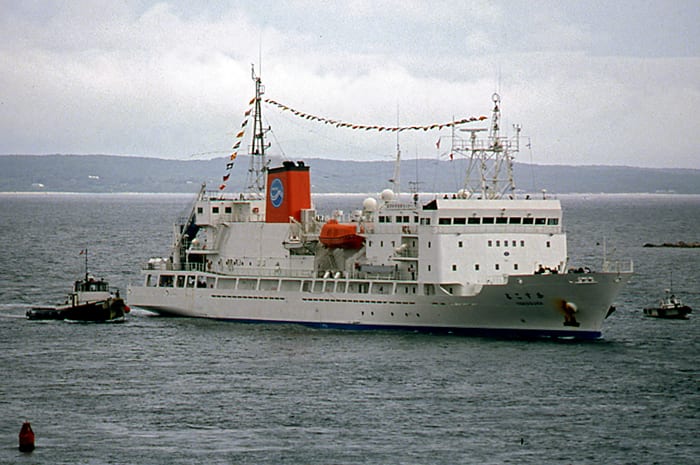Multimedia Items
Newsworthy Research
WHOI research associate Crystal Breier (second from left) showed a group of 2014 Ocean Science Journalism fellows the gamma well detector used to process samples of seawater for signs of…
Read MoreSpecial Deliveries
WHOI research assistant Steve Pike unpacks some of the first water samples collected as part of a citizen-science initiative started by chemist Ken Buesseler to track the spread of radiation…
Read MoreA Drop in the Ocean
WHOI research assistant Steve Pike adds a uranium-233 “spike” to a sample of seawater from the Pacific Ocean that he will measure for the presence of uranium-236. By adding a…
Read MoreDay at the Beach
Members of the lab run by WHOI chemist Matt Charette installed equipment on a beach during a recent trip to Northeast Japan. In addition to collecting groundwater samples near the…
Read MoreUp Close
Recent reports of leaks from the site of the Fukushima Dai-ichi nuclear power plant have not deterred researchers from continuing to study the impact and spread of radiation in the…
Read MoreDeepest Ocean
Ocean trenches, such as the Kermadec (shown here) near New Zealand, exist where one of Earth’s tectonic plates is sinking and sliding beneath another. This process, referred to as plate…
Read MoreHunting Radioactivity
Japanese biologist, Hiroomi Miyamoto, checks on an aerosol sampler during the 2011 R/V Ka’imikai-O-Kanaloa cruise off the northeast coast of Japan near Fukushima. The sampler, which was fastened to the top…
Read MoreHold the Cesium
After the earthquake and nuclear release in northeast Japan, many people have begun looking at foods like this tuna appetizer in a very different way. WHOI chemist Ken Buesseler spent…
Read MoreHot Mud
WHOI marine chemist Ken Buesseler (center) holds two vials of ocean sediment collected from the Pacific seafloor 50 miles from the damaged Japanese nuclear power plant, Fukushima Dai-ichi. In June…
Read MoreIn the Wake of a Disaster
In March 2011, Japan’s Fukushima Daiichi nuclear power plant, crippled by a tsunami, released a record amount of radioactive material into the ocean. Three months later, WHOI marine chemist Ken Buesseler…
Read MoreHome Away from Home
No matter what the nationality, the interior of virtually any research vessel becomes recognizable as a floating scientific lab almost as soon as it leaves port. Still, some differences remain.…
Read MoreTowing a Trawl
This large trawl net was deployed from the research vessel Tansei Maru off the coast of Japan to collect large zooplankton, small fish, crustaceans, and squid at middle depths of…
Read MorePacific Highway
An international scientific team led by WHOI marine chemist Ken Buesseler completed a research cruise in June 2011 to assess the levels and dispersion of radioactive substances from the Fukushima…
Read MoreTraveling Light
WHOI research technician Steve Pike is shown packing water samples on board the R/V Ka’imikai-O-Kanaloa in June 2011 off the northeast coast of Japan. Pike was part of an international…
Read MoreMeasuring the Invisible
Research Associate Crystal Breier inserts a prepared sample into a lead-lined gamma well detector. The specialized instrument amplifies and measures energy released by the decay of radioactive isotopes, in this…
Read MoreThe Sea’s Bounty
A collection of copepods fills a specimen dish to be identified and counted. Scientists on board the research vessel Ka’imikai-o-Kanaloa collected the sample off the northeast coast of Japan in…
Read MoreSampling the Sampler
Crystal Breier, Kamila Stastna, Ken Buesseler, and Sachiko Yoshida (left to right) draw water from a rosette sampler in June 2011 on board the R/V Ka’imikai-o-Kanaloa. The cruise was organized…
Read MoreBringing in the Catch
Marine biologist Hannes Baumann (far right) from State University of New York (SUNY) Stony Brook prepares to get a line on a Methot net from the stern of the research…
Read MoreOne Last Check
Marine chemist Ken Buesseler (left) and University of Hawaii technician Paul Balch make a final inspection of a rosette sampler prior to deploying the instrument. Buesseler organized the cruise aboard…
Read MoreA Fish In Hand
Stony Brook University marine biologist Hannes Baumann holds a hatchetfish brought to the surface in a net trawl off the northeast coast of Japan in June. Baumann and 16 other…
Read MoreTsunami Shrine
Marine chemist Ken Buesseler pays his respects at Namiwake Shrine outside the city of Sendai, Japan, prior to departing on a cruise to study radiation releases into the ocean from…
Read MoreChernobyl’s Ocean Legacy
Twenty-five years ago today, the Chernobyl nuclear power plant in Ukraine exploded and burned, creating what was at the time the largest accidental release of radiation to the environment. Ken…
Read MoreWhen Colleagues Came Calling
Bedecked with pennants, the 105-meter R/V Yokosuka carrying the Shinkai 6500 submersible, operated by the Japan Agency for Marine-Earth Science and Technology (JAMSTEC), visited WHOI in 1994 after a joint…
Read More
